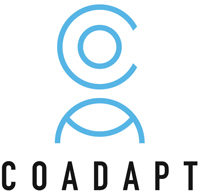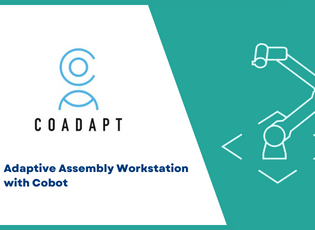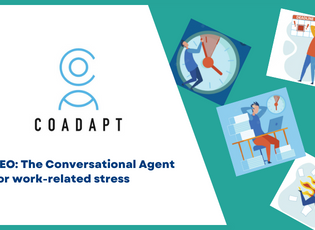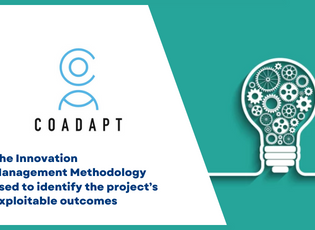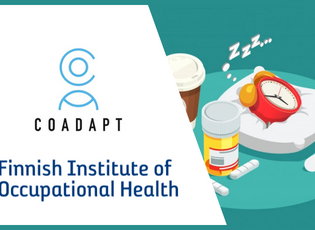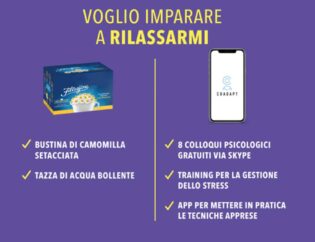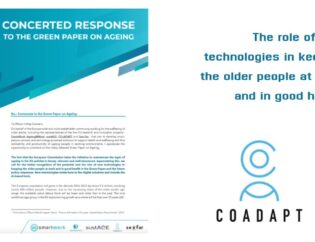
In the COADAPT project, FIOH (Finnish Institute of Occupational Health) is responsible for the Smart Shift Scheduling case. They are studying in an on-going intervention study, how smart shift scheduling tools are associated with ageing health care employees realized working hours, recovery, and health. The on-going study also investigates whether the use of the software will decrease sickness absence among the ageing employees.
What is smart shift scheduling?
Smart shift scheduling is a new, digital way to evaluate the possible health risks of shift work (i.e. shift ergonomics). The other key aspect of the smart shift scheduling is the possibility for participatory working time scheduling, which is a collaborative approach to schedule work shifts in co-operation between the employer and employees. The software enables including working time legislation, operation of the ward, and employees´ equality and fairness in the adjustments of the work schedules. Based on the ward-level rules, each employee plans work shifts in three-week periods in the software. The software shows the other aspect of the smart shift scheduling, shift ergonomics, using a traffic light colour coding based on the evidence-based recommendations by the FIOH.
Investigating participatory working time scheduling
Being on the halfway results of the project, we have been able to utilize objective working hour data collected so far, and have published two scientific articles regarding the effects of using participatory working time scheduling software and one cross-national article regarding the risk of long-term sickness absence. The results that they found were indeed interesting. In hospital wards using participatory working time scheduling software, sickness absence spells, and short sickness absence days (1-3 days) decreased by 6% and 7% compared to the wards that continued in traditional scheduling. Even though the actual changes in different working time characteristics were minor between the two ways of scheduling, perceived control over the scheduling of shifts improved and excessive sleepiness in connection with evening shifts decreased among employees using the participatory working time scheduling software. With the expanding data that will be collected in the COADAPT-project, we will be able to study further whether the results are dependent on employees’ age.
Investigating shift workers’ long-term sickness absence and age
A recent Danish-Finnish cross-national article on different working hour characteristics and long-term sickness absence among nursing personnel produced novel results on how scheduling of working hours is likely to affect the risk of long-term sickness absence. In Finland, the risk was higher among nurses over 50 years, in case they had frequent long work weeks (>40h/week) or frequent long work shifts (9-12h). In Denmark, higher risk of long sickness absence was found in connection with more than 50 evening or night shifts per year, having >48h work weeks and having 5 or more consecutive night shifts. Also, the Finnish data showed tendency towards higher risk in long spells of night shifts. With the expanding Finnish data that will be collected in the COADAPT-project, these issues will be studied further.
Conclusions, until this point
The results gained so far are promising with regard to the aims of the COADAPT-project, specifically aiming to find solutions to promote ageing employees’ well-being at work, health, and participation in working life. Increasing ageing employees’ opportunities to influence their shift scheduling and limiting strenuous working hour characteristics, like long working hours, are likely the key elements in the solution.
Links to the open access articles:
Karhula K, Turunen J, Hakola T, Ojajärvi A, Puttonen S, Ropponen A, Kivimäki M, Härmä M. The effects of using participatory working time scheduling software on working hour characteristics and wellbeing: A quasi-experimental study of irregular shift work. Int J Nurs Stud. 2020 Jun 24:103696.
Online ahead of print. https://www.sciencedirect.com/science/article/pii/S0020748920301802
Larsen AD, Ropponen A, Hansen J, Hansen ÅM, Kolstad HA, Koskinen A, Härmä MI, Garde AH. Working time characteristics and long-term sickness absence: a large register-based study of Danish and Finnish nurses. Int J Nurs Stud. 2020 May 21.
Online ahead of print. https://www.sciencedirect.com/science/article/pii/S0020748920301231
Turunen J, Karhula K, Ropponen A, Koskinen A, Hakola T, Puttonen S, Hämäläinen K, Pehkonen J, Härmä M. The effects of using participatory working time scheduling software on sickness absence: A difference-in-differences study. Int J Nurs Stud. 2020 Jul 14;103716. Online ahead of print. https://www.sciencedirect.com/science/article/pii/S0020748920302029
Trends of working hours in the Finnish social affairs and health care sector can be observed in the Work-life knowledge service database at https://www.työelämätieto.fi/#/en/dashboards/working-hours.
